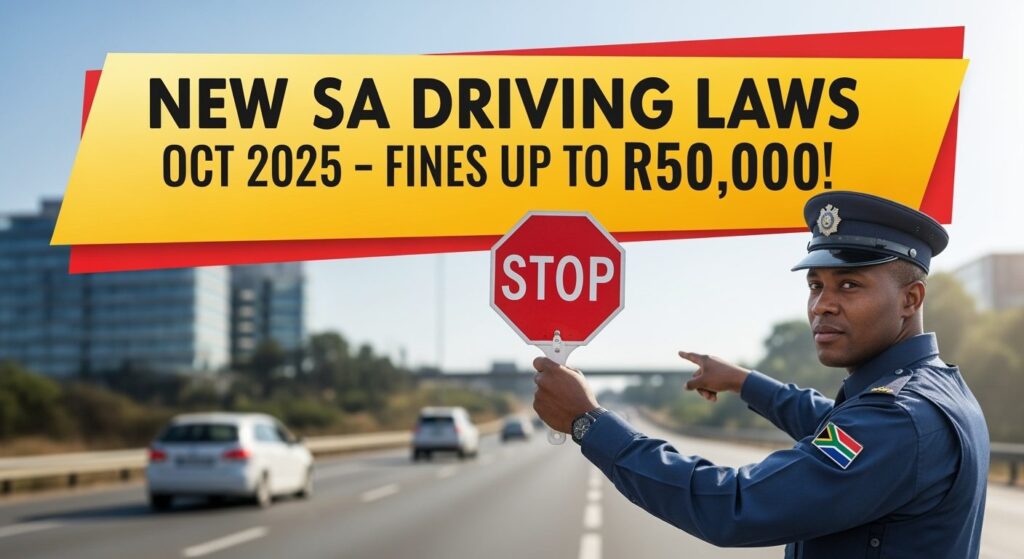New driving laws: As we approach October 2025, I want to make sure you’re fully prepared for the significant changes coming to our road rules. The transportation department has announced a comprehensive overhaul of driving regulations that will introduce substantial financial penalties for non-compliance. These new driving laws October 2025 will affect everyone from daily commuters to occasional drivers, with fines that could seriously impact your wallet if you’re caught unaware. Have you started thinking about how these changes might affect your daily commute? I’ve been researching these updates extensively to help you navigate the new landscape of road regulations without falling victim to these hefty penalties.

What Are The New Driving Laws Coming in October 2025?
The upcoming regulations represent the most significant overhaul of driving laws in recent years. At their core, these new driving laws October 2025 focus on enhanced road safety, environmental protection, and adaptation to emerging technologies. The changes include stricter penalties for mobile phone usage while driving, with fines potentially reaching up to $1,000 for repeat offenders. Speed limit enforcement will also see major changes, with automated detection systems being deployed across more roadways and penalties doubling in some cases.
Additionally, environmental considerations have prompted new emissions-related regulations, requiring vehicles to meet stricter standards or face substantial fines. For electric vehicle owners, there are new rules regarding charging station usage and dedicated lane access. The most controversial change involves mandatory vehicle connectivity checks, ensuring your car’s software is updated to communicate with smart infrastructure – failure to comply could result in your vehicle being flagged for inspection.
 South Africans Shocked by New Electricity Laws October 2025 – See What Rules Start This Month
South Africans Shocked by New Electricity Laws October 2025 – See What Rules Start This Month
Why These Massive Fines Are Being Implemented
Government officials cite alarming statistics as the primary motivation behind these stringent measures. Road fatalities have seen a concerning uptick in recent years, with distracted driving playing a significant role. The substantial fines serve a dual purpose: deterring dangerous behavior and funding improved road safety infrastructure. I’ve noticed that public opinion remains divided, with safety advocates applauding the strict approach while others worry about the financial burden on ordinary drivers.
 October 2025 Youth Grant R12,500 – Final Application Days Left, Learn Exactly How to Apply
October 2025 Youth Grant R12,500 – Final Application Days Left, Learn Exactly How to Apply
The environmental component reflects broader climate commitments, with transportation emissions targeted as a key reduction area. By implementing these severe penalties, authorities hope to accelerate the transition to greener vehicles and more sustainable driving practices. The technology requirements, meanwhile, prepare our road network for the anticipated increase in semi-autonomous vehicles, which rely on communication with both infrastructure and other vehicles to operate safely. These new driving laws October 2025 represent a forward-looking approach to transportation challenges.
How to Prepare for the New Regulations
Preparing for these changes doesn’t have to be overwhelming if you start now. First, I recommend reviewing your vehicle’s current compliance status with the upcoming emissions standards – many newer models already meet requirements, but older vehicles might need modifications or eventually face replacement. Next, familiarize yourself with the specific phone usage rules, which now distinguish between different types of interactions and mounting positions.
- Update your vehicle’s software and connectivity systems regularly
- Consider installing approved hands-free technology if your vehicle lacks it
- Review your insurance policy to understand coverage related to the new violations
- Download the official transportation department app for real-time updates on rule changes
For those with older vehicles, budget planning might be necessary as some compliance upgrades could be costly. The good news is that several manufacturers are offering compliance packages at reduced rates ahead of the implementation date, and some local governments have announced subsidy programs for lower-income drivers.
 R12,500 Youth Empowerment Grant October 2025 – Government Urges Young South Africans to Apply Now
R12,500 Youth Empowerment Grant October 2025 – Government Urges Young South Africans to Apply Now
When These Changes Will Take Effect
While October 1, 2025, marks the official implementation date, authorities have outlined a phased approach. Educational campaigns will begin in early 2025, followed by a three-month warning period where violations will result in warnings rather than fines. Full enforcement with complete penalty structures commences on January 1, 2026. This graduated timeline aims to give drivers adequate time to adapt to the new requirements without immediately facing severe financial consequences.
Different regions may have slightly varied implementation schedules, so I strongly recommend checking your local transportation department website for specific dates relevant to your area. Some jurisdictions have indicated they’ll prioritize enforcement of certain aspects, such as phone usage violations, before others. The technology-related requirements generally have the longest grace periods, recognizing that hardware upgrades might be necessary for many vehicles.
Real-World Impact Example
Consider the case of Denver resident Michael Thompson, who participated in a pilot program previewing these regulations. After receiving warnings for three minor infractions under the new system, he calculated that under full enforcement, he would have faced over $1,200 in fines for behaviors that are currently either legal or carry minimal penalties. “It completely changed how I approach driving,” Thompson reported. “I’ve installed a proper phone mount, enrolled in an emissions reduction program for my older SUV, and I’m much more conscious of my speed in variable limit zones.” His experience highlights how these new driving laws October 2025 will require significant behavioral adjustments for many drivers.






